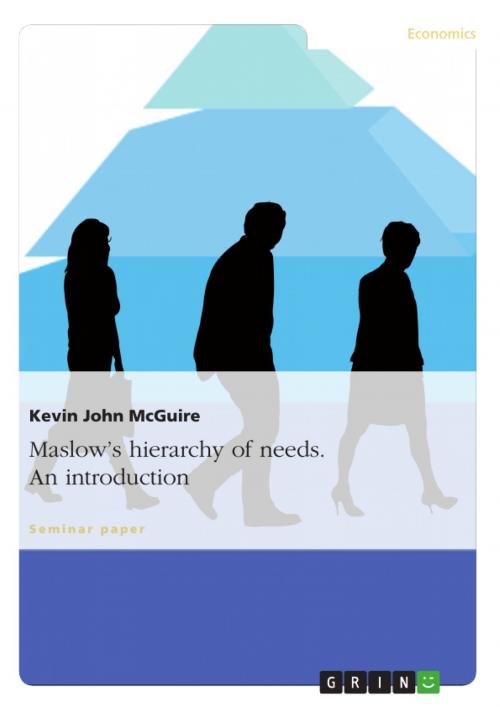Maslow's hierarchy of needs. An introduction
Business & Finance, Management & Leadership, Management| Author: | Kevin John McGuire | ISBN: | 9783656233657 |
| Publisher: | GRIN Publishing | Publication: | July 12, 2012 |
| Imprint: | GRIN Publishing | Language: | English |
| Author: | Kevin John McGuire |
| ISBN: | 9783656233657 |
| Publisher: | GRIN Publishing |
| Publication: | July 12, 2012 |
| Imprint: | GRIN Publishing |
| Language: | English |
Research Paper (undergraduate) from the year 2011 in the subject Business economics - Business Management, Corporate Governance, grade: 1,3, University of applied sciences, Munich, language: English, abstract: It would appear that the discussion of methods to motivate employees has become a never-ending topic under those responsible for company personnel. The question of how to get employees fully engaged with the goals of the company appears to remain a central issue in human resource management. The difficulty might be in the continuing adjustment necessary in a changing company. Keeping the employees involved in the frequently changing goals is more important than ever before in company management. Sustained success of the company is only possible when the workers are included in the strategic planning. But what means are available in the modern workplace to ensure that the employees remain satisfied and motivated? One can consider Abraham Maslow's Hierarchy of Needs, which was developed in the 40s and 50s in the USA. His theory remains valid today for understanding human motivation, management training and personal development. Indeed, Maslow's ideas surrounding the Hierarchy of Needs may be applicable. The responsibility of employers to provide a workplace environment that encourages employees to fulfill their own potential (self-actualization) is today more relevant than ever. To visualize his theory and to illustrate the hierarchy needs, Maslow developed a pyramid which was published in 1954 in his book 'Motivation and Personality'.
Research Paper (undergraduate) from the year 2011 in the subject Business economics - Business Management, Corporate Governance, grade: 1,3, University of applied sciences, Munich, language: English, abstract: It would appear that the discussion of methods to motivate employees has become a never-ending topic under those responsible for company personnel. The question of how to get employees fully engaged with the goals of the company appears to remain a central issue in human resource management. The difficulty might be in the continuing adjustment necessary in a changing company. Keeping the employees involved in the frequently changing goals is more important than ever before in company management. Sustained success of the company is only possible when the workers are included in the strategic planning. But what means are available in the modern workplace to ensure that the employees remain satisfied and motivated? One can consider Abraham Maslow's Hierarchy of Needs, which was developed in the 40s and 50s in the USA. His theory remains valid today for understanding human motivation, management training and personal development. Indeed, Maslow's ideas surrounding the Hierarchy of Needs may be applicable. The responsibility of employers to provide a workplace environment that encourages employees to fulfill their own potential (self-actualization) is today more relevant than ever. To visualize his theory and to illustrate the hierarchy needs, Maslow developed a pyramid which was published in 1954 in his book 'Motivation and Personality'.















